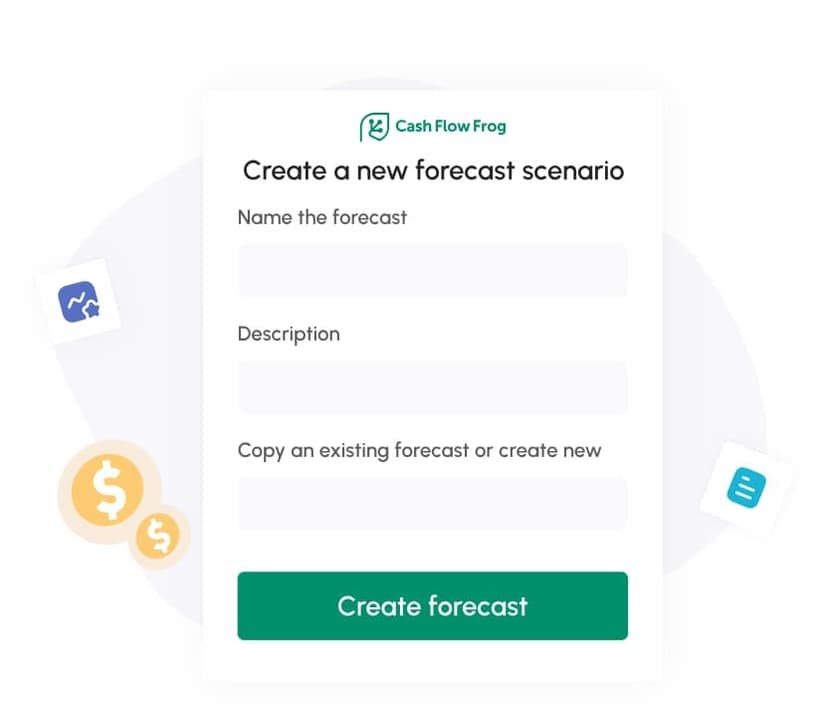The Importance of Cash Flow Forecasting in Financial Planning

A cash flow forecast is a way for businesses to know how much cash flow they’ll have at a specific period of time. For example, you may run a 3-month forecast that will predict your:
- Cash inflows
- Cash outflows
And as part of the cash flow forecast definition, this will determine the net of your cash and equivalents over a period of time.
Benefits Of Cash Flow Forecasting
Why spend all of this time on creating a forecast? Your business will benefit from the hard work and effort in numerous ways:
- Cash positions: Your forecast will help you know what your cash position may be during and at the end of the forecasting period. If you know what your funds may look like, it’s possible to make smarter investments and decisions for your business.
- Identify bottlenecks: Cash bottlenecks occur in every business, but knowing what they may be will allow you to secure funding to prevent business interruptions. For example, if cash is low, you can take out short-term loans to cover the expenses.
- Scenario planning: What will happen if you make a certain investment, such as hiring a new employee? What if your sales go up or down? You can run scenarios to better understand what happens to your cash flow based on numerous variables.
- Decision-making: You don’t want to make decisions in business blindly. Forecasts help you make smarter, data-backed decisions that will help you grow your company.
Forecasting is never 100% accurate, so you’ll want to run multiple forecasts and find a happy medium that you believe is a realistic scenario that will occur. Often, businesses will make a low and high projection and assume that their finances will come somewhere in the middle.
How To Create a Cash Flow Forecast
Cash flow forecasting is best when using tools that help you automate the:
- Data collection
- Forecast reports
Human forecasts are at-risk of having errors, and automating the process as much as possible will reduce the risk of discrepancies. Incorporating best practices for using technology in cash flow management can further streamline this process and enhance accuracy.
You can also use templates to help, but the basic idea is to determine:
- Beginning cash flow
- Sources of cash
- Receivables collections
- Deposits
- Total sources of cash
Once you have your total cash for the period, you’ll then want to log all of the uses of cash, which are your general expenses.
Your expenses may include the following:
- Payroll
- Vendor payments
- Loan payments
- Rent
- Utilities
- Equipment
- Overhead costs
Add in any expenses that you expect to have for the forecasting period. You'll need to determine your ending cash balance for the period.
While forecasting seems simple, there are challenges that exist that make it a cumbersome process, especially as your business grows.
Challenges In Cash Flow Forecasting
Creating a cash flow forecast is easier for small companies than for larger ones because there are more variables involved. You often have to collect data from multiple departments, which may not be as cooperative as you would have hoped.
If you have multiple offices, you may need the accounting departments of each office to send over accurate data.
The most common challenges that you’ll face include:
- Multiple departments that may not be cooperative
- Inaccurate data
- Lack of or missing historical data
- Forecasting too far in the future
- Forgetting to adjust your forecasts based on seasonality
- Failing to account for historical changes in growth and contraction
- Misclassifying certain forms of income
If you use the wrong formulas or functions because you’re using spreadsheets, it will negatively affect your forecasts.
You want to use tools to help you create forecasts because they’ll reduce the risk of errors and speed up the forecasting process. But if you do have to run forecasts manually, work with an accounting professional.
Accountants will help you speed up your forecasts, gather and verify data, and run forecasts faster and more efficiently.
A lot of work goes into cash flow forecasts, but they’re important to a healthy business operation. You’ll also want to keep on top of the 2024 trends in cash management so that you can adapt your business appropriately.
Why Is Cash Flow Forecasting Important?
Cash flow forecasting is important for every business. Creating a cash flow projection can help your organization:
- Engage in liquidity planning. Forecasting can ensure your business has enough future cash reserves to cover debt payments and meet your short-term obligations.
- Meet reporting requirements. Your business may be required to provide projections at certain times of the year. Creating a cash forecast can help meet these requirements.
- Understanding the difference between ledger balance vs available balance can also help in more accurately tracking your cash position during the forecasting period, ensuring that businesses make well-informed financial decisions based on the funds truly available for use.
- Engage in scenario planning. A business can estimate how their cash flow will be impacted in a variety of scenarios, allowing them to plan for the best- and worst-case scenarios.
What Is Included in a Cash Flow Forecast?
There are several components used in cash flow forecasting. These include:
Opening Balance
Every cash flow forecast starts with an opening balance. Your opening balance represents your current cash position.
Cash Outflows
One of the most important components of your cash flow forecast is your cash outflows. Outflows represent all of the cash that flows out of your business during the forecasting period.
These expenses can include:
- Salaries
- Raw materials
- Rent and utilities
- Debt payments
- Taxes
- Marketing fees
- Investments
Any and all expenses will be included in this section of your forecast. The sum of these fees will represent your cash outflows for the forecasting period.
Cash Inflows
Cash inflows are the opposite of cash outflows. They represent the cash that is flowing into your business from things like:
- Sales
- Investments
- Tax refunds
- Funding
The sum of these figures will represent your cash inflows.
These are the three primary components of a cash flow forecast. The difference between your cash inflows and outflows will give you your cash flow for the period.
Cash Flow Forecasting Methods
There are several approaches you can take to create a cash flow forecast. Some of the most popular forecasting methods include:
- Straight-line forecasting: The simplest approach to forecasting. With this method, you use past data and patterns to project future growth.
- Qualitative forecasting: This method combines historical data, research and expert opinion to produce a more well-rounded forecast.
- Automated forecasting: Today, more businesses are adopting automated forecasting, which gathers data directly from banks to generate forecasts. These tools use machine learning and AI to generate forecasts automatically.
To leverage the advantages and time savings of automated forecasting, you need to invest in the right cash flow forecasting tools.
Cash Flow Forecasting Tools
There are many tools available that you can use to create a cash flow forecast, including Cash Flow Frog.
But how does cash forecasting work when you use a platform like ours?
Forecasting tools use your historical financial data and other relevant data (expenses, sales projections, etc.) to create cash flow forecasts for a specific period of time.
There are many advantages to using tools for this process:
- They gather information in real time, so it’s always up-to-date
- They use automation to create forecasts, which save time and reduce the risk of errors
- They offer analytics and reporting to help you understand your business’s financial performance
- They allow you to perform this important financial task from one centralized location
Ultimately, these tools help you make smarter business decisions based on accurate, reliable forecasts.
Financial planning is important for every business, and cash flow forecasting plays an integral role in the process. Use this guide to start improving your forecasting methods and overcome common challenges businesses face.

Current Liabilities: Meaning, Examples, and How to Calculate Them
Read more

What Is a Finance Charge? A Simple Explanation You’ll Actually Use
Read more

Current Assets Explained: Meaning, Types, and How They Work
Read more

Cash Flow Forecasting Template
Read more

Your Guide To Financial Metrics And KPIs
Read more

10 Cash Management Trends for 2026
Read more
FAQ
Trusted by thousands of business owners
Start Free Trial Now